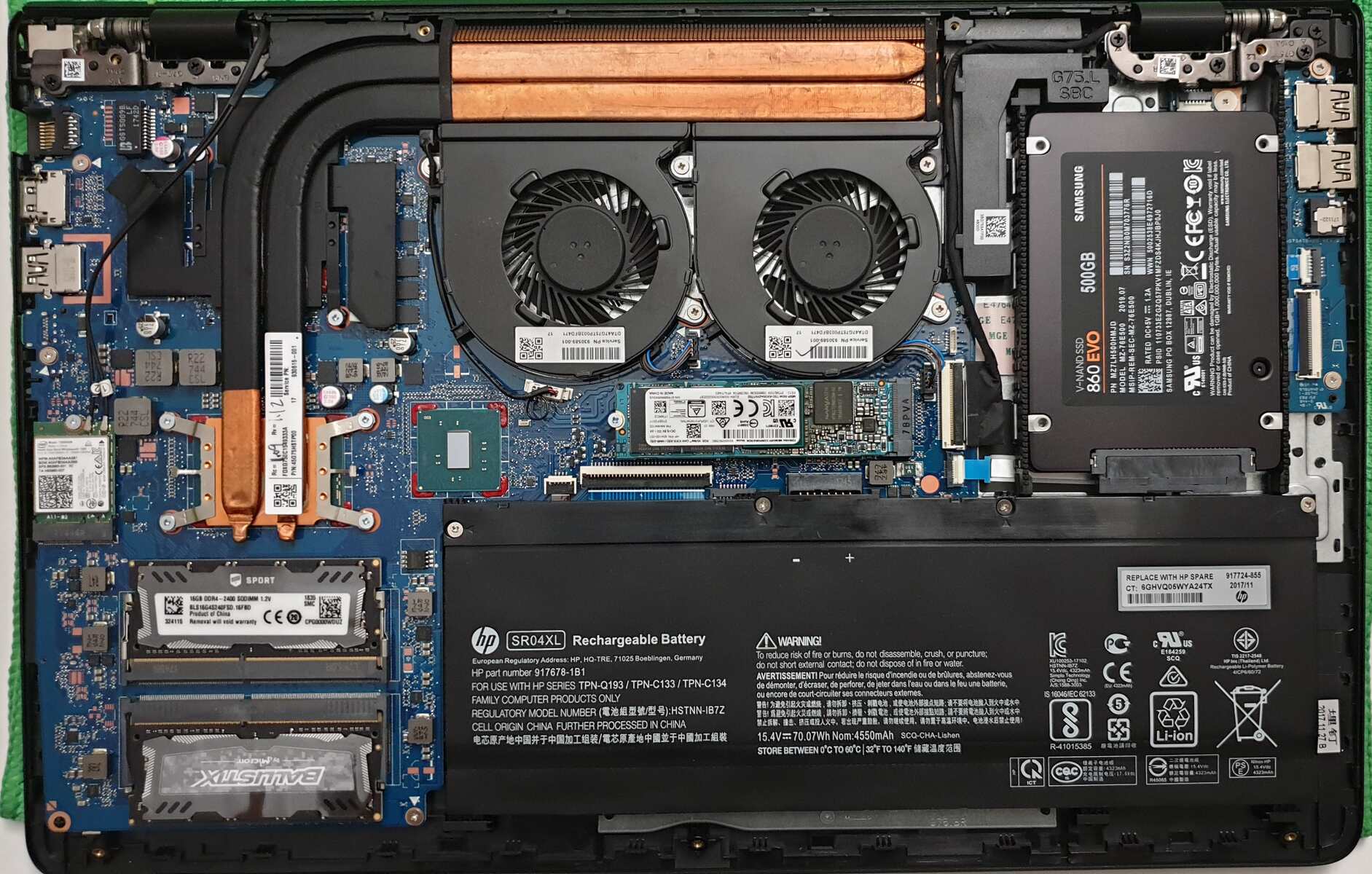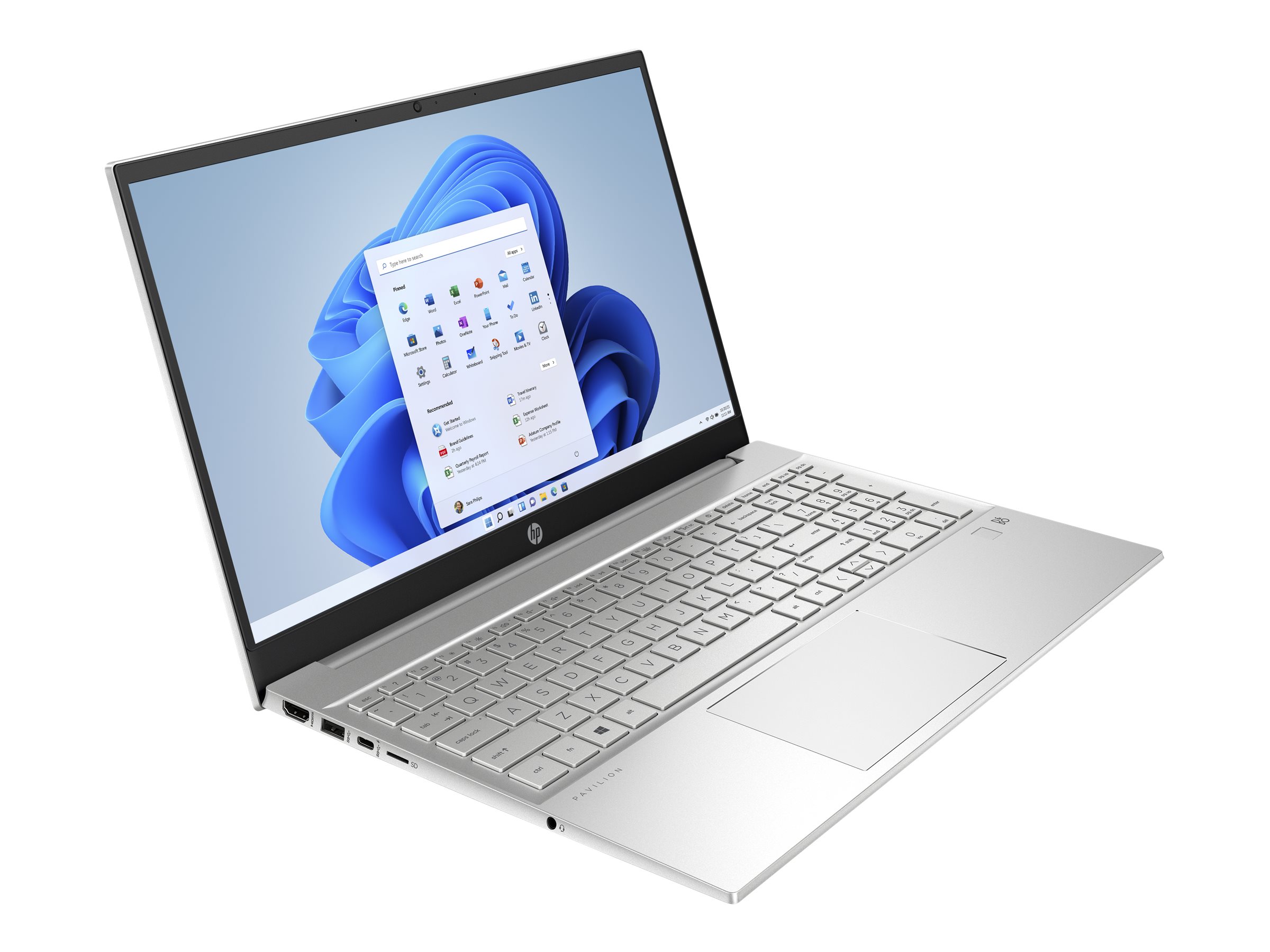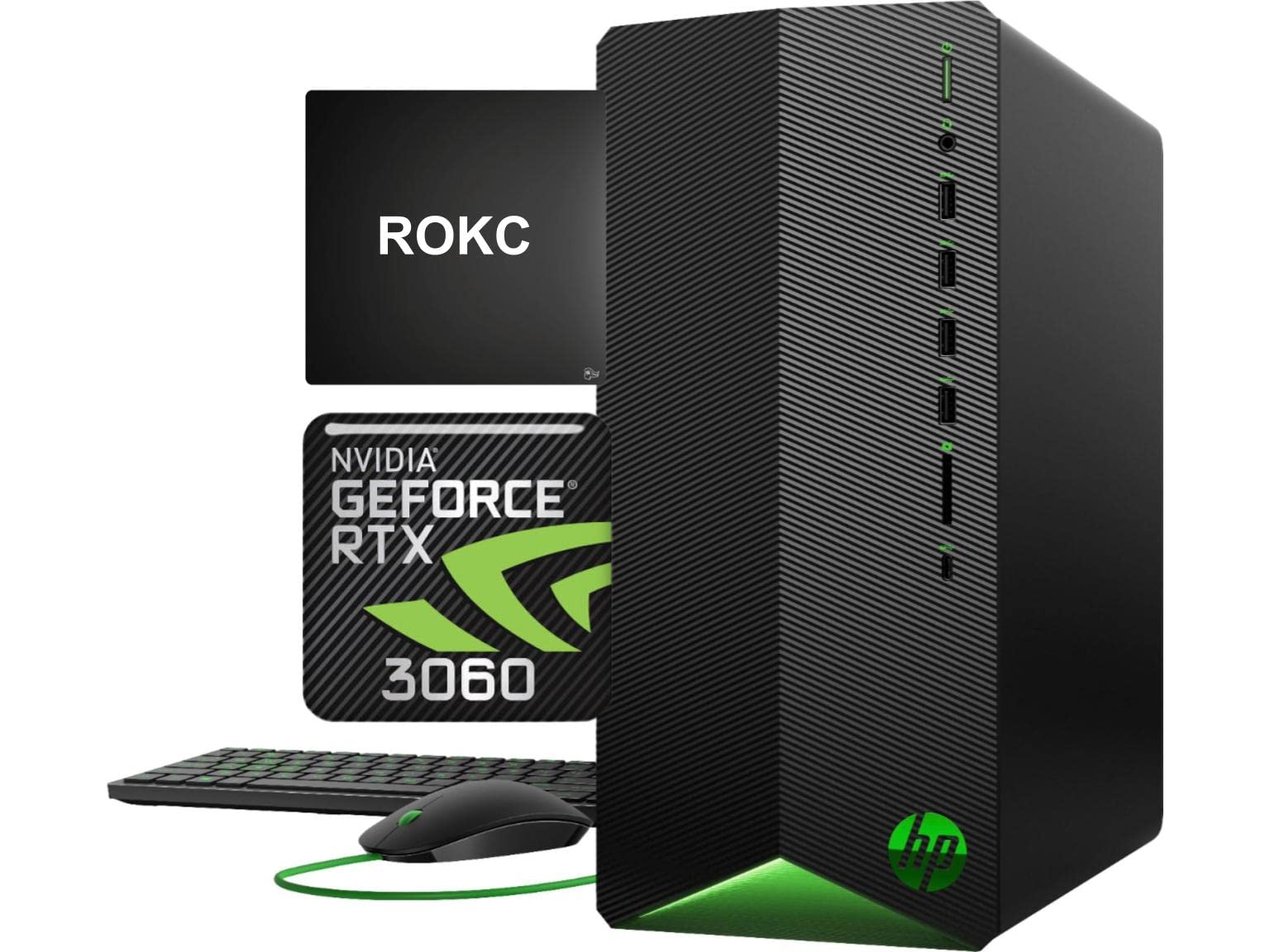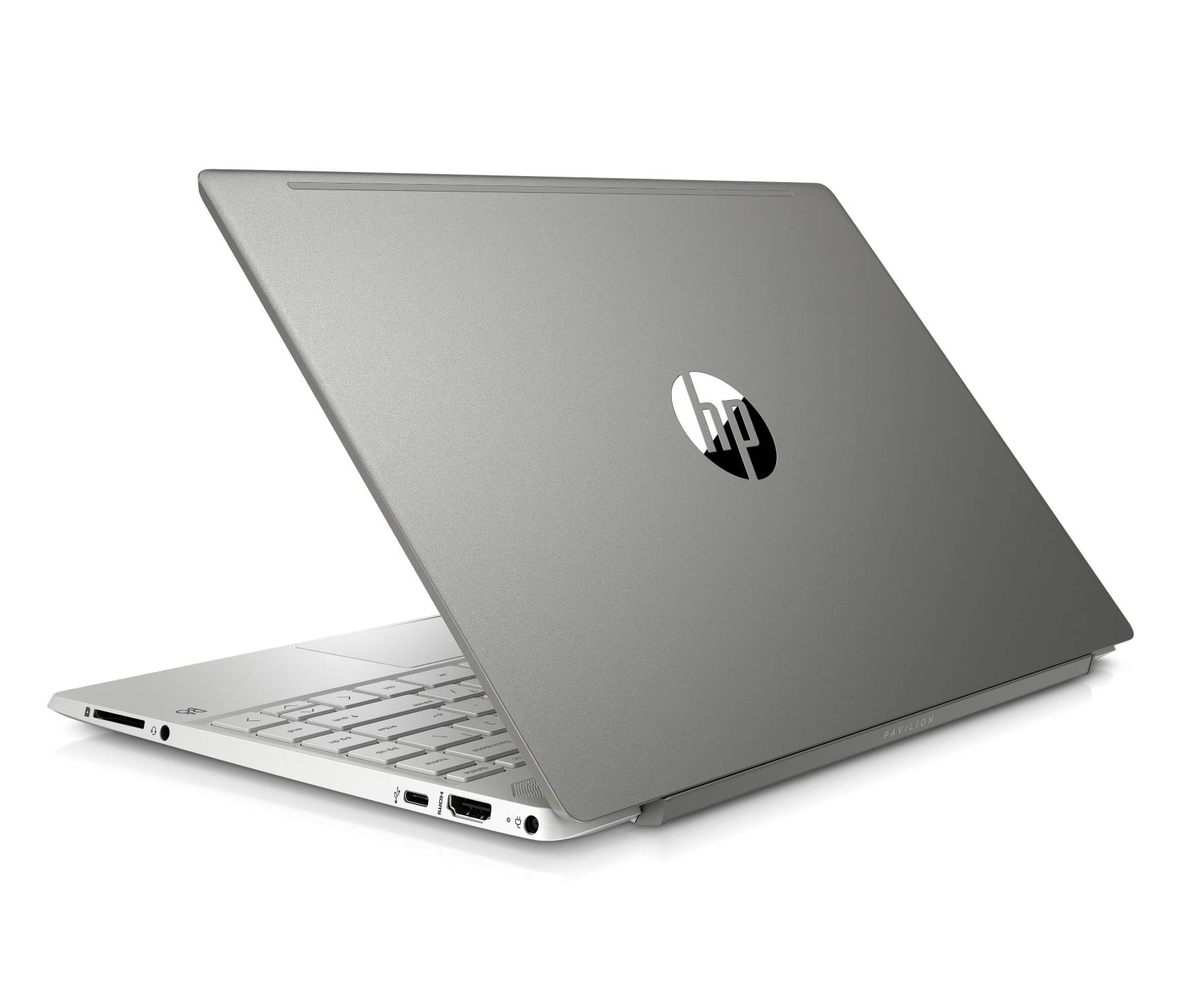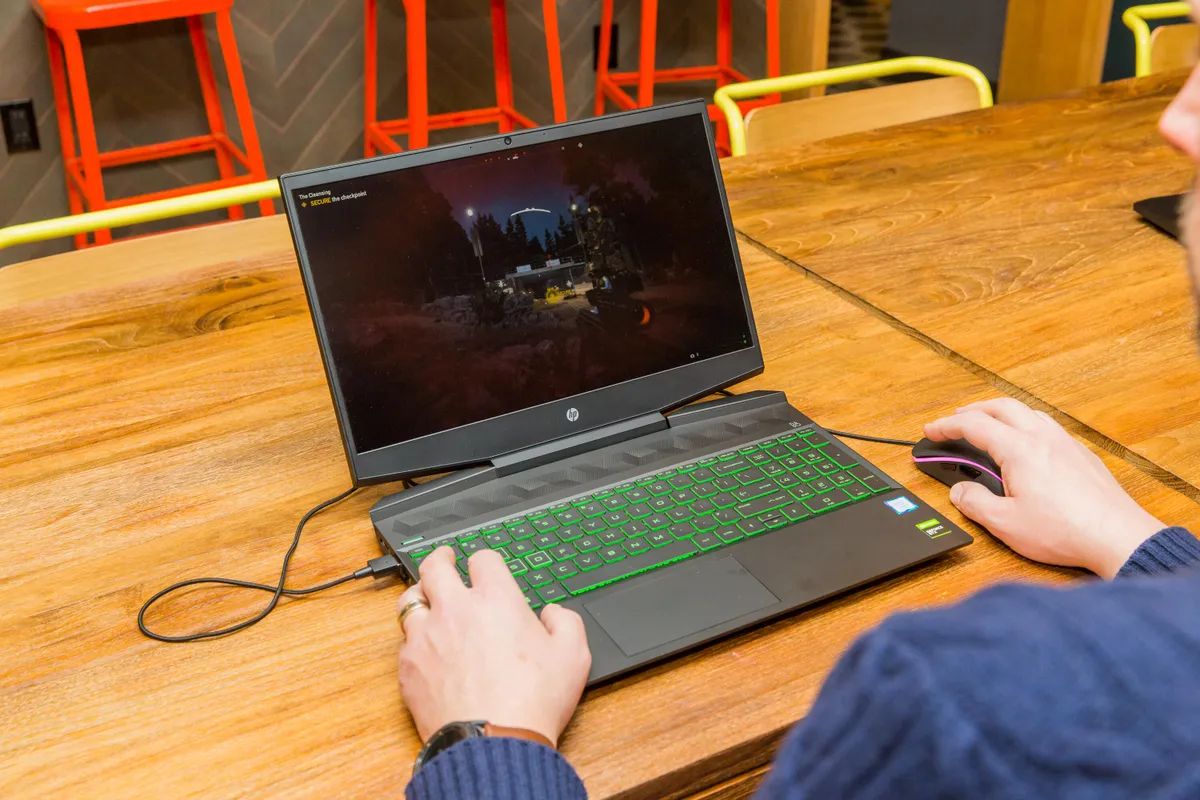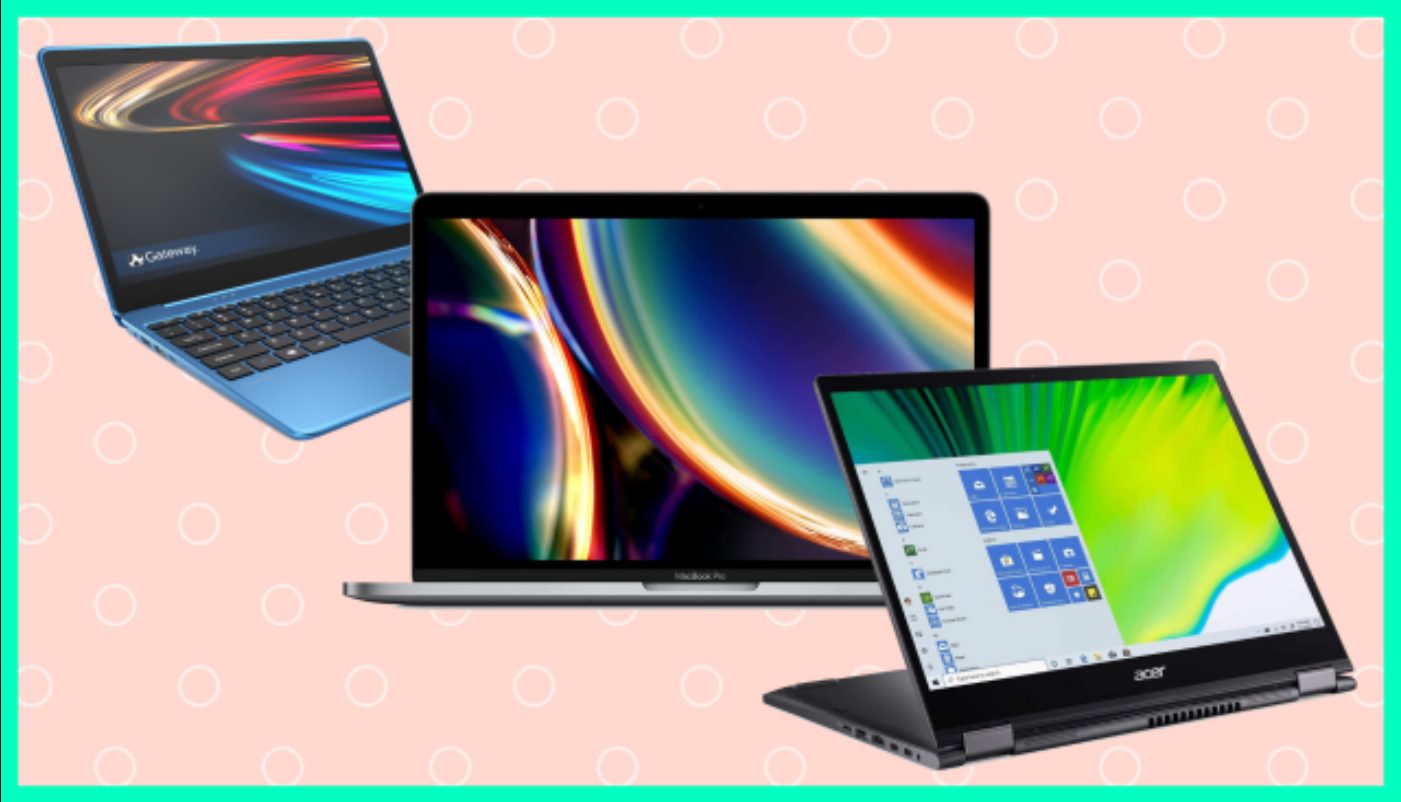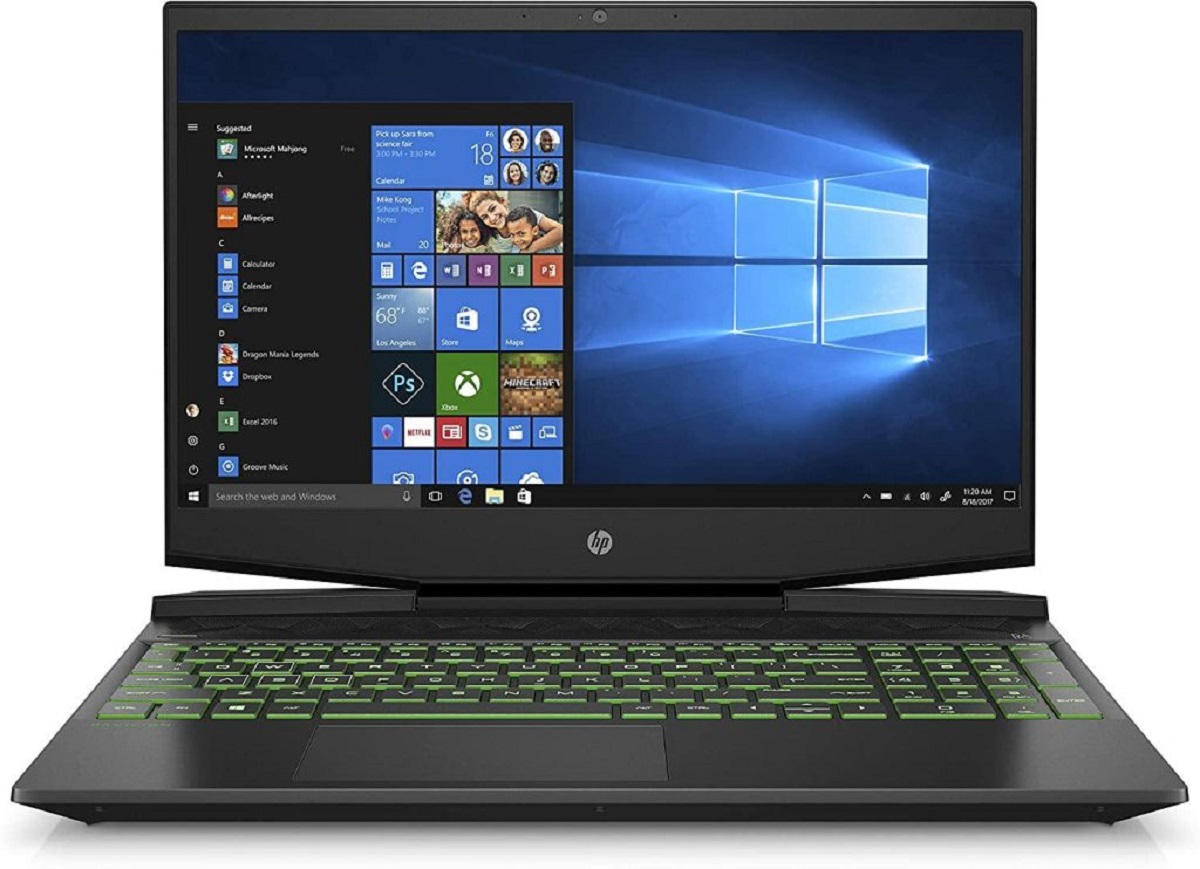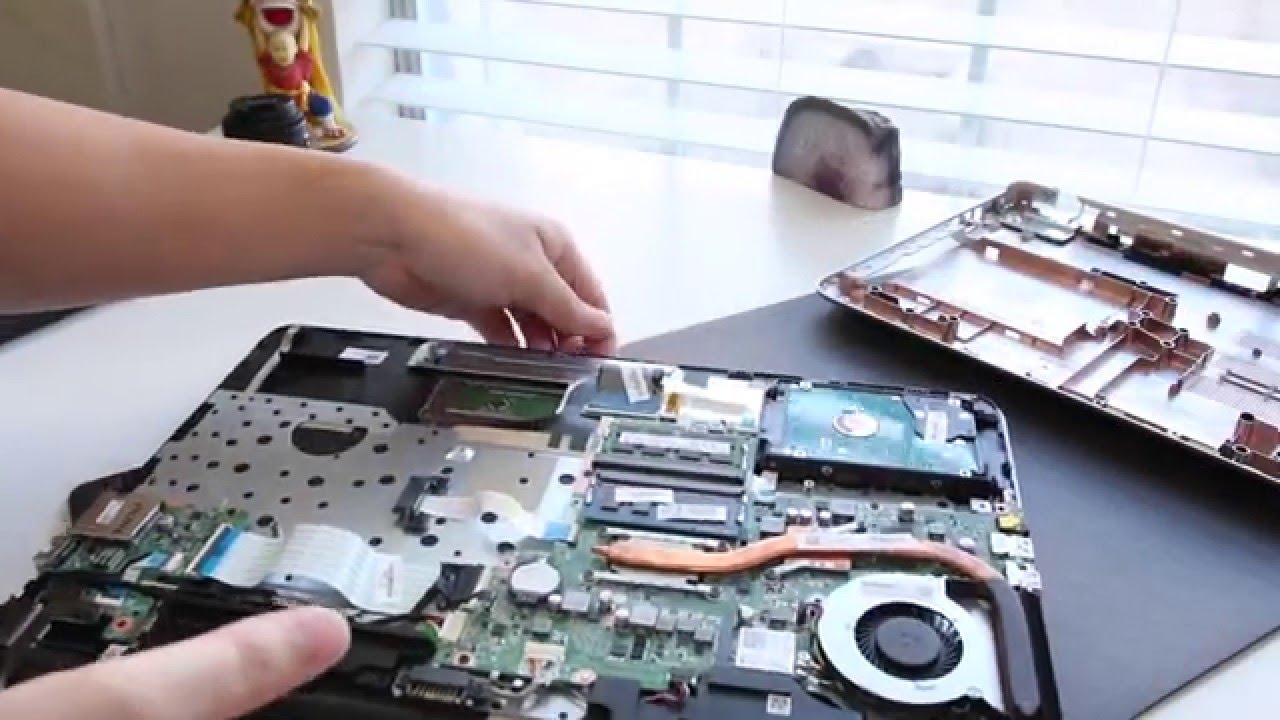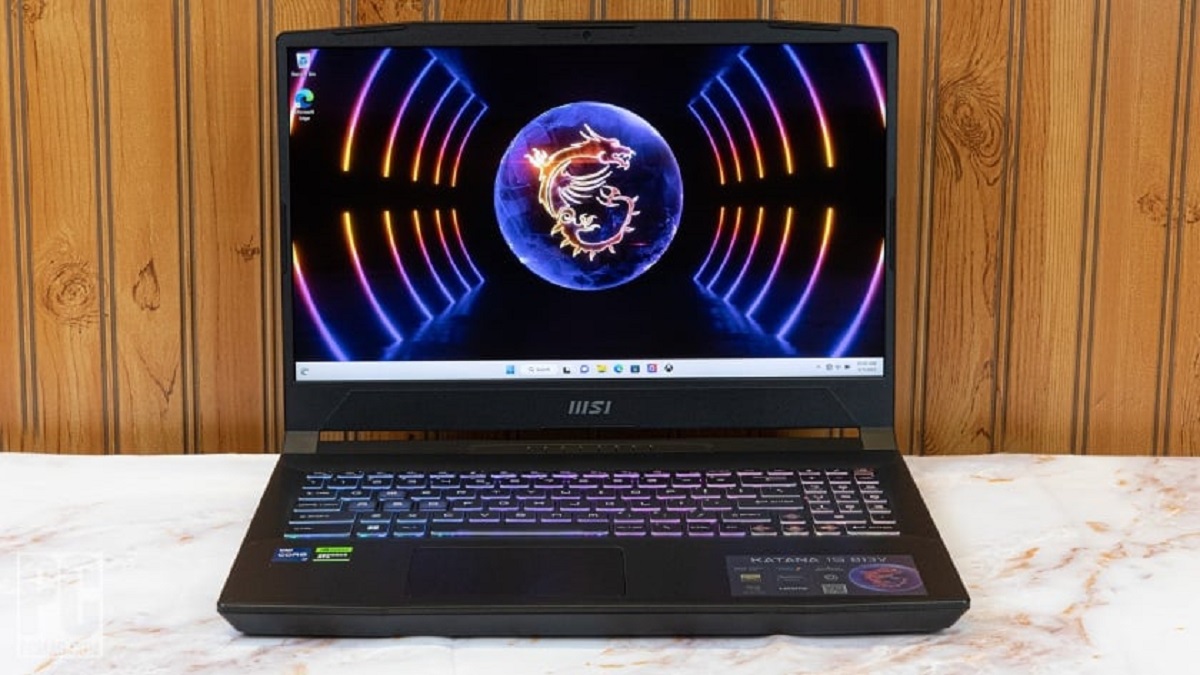Introduction
Welcome to this informative guide on the RAM specifications of the HP Pavilion. RAM, or Random Access Memory, is an essential component of any computer system. It plays a crucial role in ensuring smooth and efficient performance, especially when running multiple applications simultaneously or engaging in resource-intensive tasks like gaming or video editing.
When it comes to the HP Pavilion, an incredibly versatile and popular line of laptops and desktops, understanding the RAM options available is vital to optimize productivity and overall system performance. This article will provide you with valuable insights into the RAM capacity of the HP Pavilion, how to check the existing RAM on your device, and how to upgrade it if needed.
Whether you’re a student, a professional, or simply someone who enjoys using their computer for various tasks, having sufficient RAM can greatly enhance your overall computing experience. The more RAM your system has, the more programs it can handle simultaneously without experiencing slowdowns or performance bottlenecks.
Throughout this guide, we will explore the different RAM options for the HP Pavilion, discuss the steps to check the amount of RAM on your device, and provide you with clear instructions on how to upgrade the RAM if necessary. It is worth mentioning that upgrading your RAM can be an effective and relatively affordable way to give your HP Pavilion a significant performance boost without having to replace the entire system.
So, if you’re ready to dive into the world of RAM specifications and learn about how to maximize the performance of your HP Pavilion, let’s get started!
Overview of HP Pavilion
The HP Pavilion is a popular line of laptops and desktop computers manufactured by Hewlett-Packard, a renowned name in the technology industry. Designed to cater to a wide range of users, from casual to power users, the HP Pavilion offers a balance of affordability, performance, and functionality.
One of the key factors that make the HP Pavilion series so enticing is its sleek and modern design. Whether you opt for a laptop or a desktop model, the HP Pavilion is crafted with attention to detail, featuring a slim profile, clean lines, and a stylish finish. It has become a favorite among users who value both aesthetics and functionality in their computing devices.
When it comes to performance, the HP Pavilion doesn’t disappoint. With a range of processor options, including Intel and AMD, users can choose a configuration that suits their specific needs. The HP Pavilion handles everyday tasks with ease, whether it’s web browsing, document editing, or multimedia consumption.
In terms of display, the HP Pavilion offers various options to cater to different preferences. From smaller screen sizes for increased portability to larger displays for immersive multimedia experiences, there is a wide selection available. Additionally, select models of the HP Pavilion offer touch screen functionality, providing users with a more intuitive and interactive computing experience.
Connectivity is another area where the HP Pavilion excels. With a comprehensive array of ports, including USB, HDMI, Ethernet, and audio jacks, the HP Pavilion ensures that users can easily connect and utilize a wide range of peripherals and accessories. Whether it’s connecting to external displays, printers, or storage devices, the HP Pavilion provides ample options to suit various connectivity needs.
Furthermore, the HP Pavilion offers a host of additional features that enhance its overall user experience. These include a comfortable keyboard with well-spaced keys for accurate and efficient typing, a responsive touchpad for precise cursor control, and high-quality speakers for immersive audio playback. Many models also come equipped with webcams and microphones, making them suitable for video conferencing and online communication.
Overall, the HP Pavilion is a reliable and versatile computing solution that strikes a balance between performance, affordability, and aesthetics. Whether you’re a student, a professional, or a casual user, the HP Pavilion offers a range of options to meet your specific needs and elevate your computing experience.
RAM Options for HP Pavilion
When it comes to the RAM options available for the HP Pavilion, there are several factors to consider. The RAM capacity determines how much memory your system can access and actively use at any given time, which directly affects its overall performance and multitasking capabilities.
The HP Pavilion typically comes with different RAM configurations, allowing users to choose the option that best suits their needs. The RAM options commonly available for the HP Pavilion include:
- 4GB RAM: This is the minimum recommended RAM capacity for basic computing tasks, such as web browsing, word processing, and light multimedia consumption. While it may be sufficient for basic usage, it may not perform well when running multiple applications simultaneously or handling more demanding tasks like graphic design or gaming.
- 8GB RAM: This is a significant step up from 4GB and provides a noticeable improvement in multitasking and overall system performance. With 8GB of RAM, you’ll be able to run multiple applications smoothly, handle more resource-intensive tasks, and have a more responsive computing experience.
- 16GB RAM: With 16GB of RAM, the HP Pavilion becomes a powerhouse that can handle intensive tasks such as video editing, 3D modeling, and gaming with ease. This higher RAM capacity ensures that your system can handle large files and complex tasks without experiencing significant slowdowns or performance bottlenecks.
- 32GB RAM: For power users, content creators, or professionals in fields like video editing, animation, or virtualization, opting for 32GB of RAM on your HP Pavilion can provide a significant boost in performance. This substantial RAM capacity allows for smooth multitasking, seamless workflow, and efficient handling of memory-intensive tasks.
It is important to note that the specific RAM options and their availability may vary depending on the model and configuration of your particular HP Pavilion. Some models may offer the option to upgrade the RAM at the time of purchase, while others may require post-purchase installation.
Before making a decision on the RAM capacity for your HP Pavilion, it’s essential to assess your specific needs and the types of tasks you commonly perform. Consider factors such as the complexity of the applications you use, the size of files you work with, and the level of multitasking you engage in. This will help you determine the optimal RAM capacity that will provide a smooth and efficient computing experience without overspending on unnecessary upgrades.
Now that you have an understanding of the different RAM options available for the HP Pavilion, it’s time to learn how to check the amount of RAM currently installed on your device.
How to Check the Amount of RAM on an HP Pavilion
If you’re unsure about the amount of RAM installed on your HP Pavilion, don’t worry! Checking the RAM capacity on your device is a straightforward process. Follow these simple steps to find out how much RAM is currently installed:
- Start by powering on your HP Pavilion and allowing it to boot up to the desktop screen.
- Next, click on the “Start” button, usually located in the bottom-left corner of the screen, and open the “Settings” menu.
- In the “Settings” menu, you will find various options. Look for and click on the “System” or “System Settings” option to access the system information.
- Within the “System” settings, you will see several tabs or categories on the left-hand side. Locate and click on the “About” or “About This PC” tab.
- In the “About” section, you will find detailed information about your HP Pavilion, including the installed RAM. Look for the “Installed RAM” or “System Memory” section to find the specific amount of RAM.
- The RAM capacity is usually displayed in gigabytes (GB) and will indicate the total amount of RAM installed on your HP Pavilion.
Alternatively, you can also use the Windows Task Manager to check the amount of RAM on your HP Pavilion. Simply right-click on the taskbar and select “Task Manager” from the context menu. In the Task Manager window, navigate to the “Performance” tab, where you will find a real-time display of various system information, including the total amount of RAM installed.
By following these steps, you can easily determine the amount of RAM currently installed on your HP Pavilion. This information will prove useful when considering whether to upgrade your RAM for improved system performance.
Now that you know how to check your RAM capacity, let’s move on to the next section and explore how you can upgrade the RAM on your HP Pavilion.
How to Upgrade the RAM on an HP Pavilion
If you find that your HP Pavilion is struggling to keep up with your computing needs or you simply want to enhance its performance, upgrading the RAM can be a viable solution. Upgrading the RAM on an HP Pavilion is a relatively straightforward process. Follow these steps to upgrade the RAM on your device:
- Before you begin, make sure to gather the necessary tools and equipment. You will need a compatible RAM module that matches the specifications of your HP Pavilion. Refer to the user manual or the HP website for information on the type and capacity of RAM supported by your specific model.
- Power off your HP Pavilion and disconnect any peripheral devices or power cables.
- Locate the access panel on the bottom or side of your HP Pavilion. This panel grants you access to the internal components of the device, including the RAM slots.
- Use a screwdriver to remove the screws securing the access panel. Carefully remove the panel and set it aside.
- Now, locate the existing RAM modules inside the device. Depending on your model, there may be one or multiple slots for RAM modules. Gently press the clips or levers on the sides of the RAM module(s) to release them from the slot.
- Remove the existing RAM module(s) from the slot(s) by pulling them straight out. Ensure that you handle the RAM modules by their edges to avoid any damage.
- Take your new RAM module and align it with the slot(s) in the same orientation as the previous module(s). Insert the new module(s) into the slot(s) at a slight angle and then press down until it clicks into place. The clips or levers should automatically secure the RAM module(s).
- Replace the access panel and secure it using the screws you removed earlier.
- Reconnect the power cables and any peripheral devices you had disconnected.
- Power on your HP Pavilion. The system should detect the upgraded RAM automatically, and you will now have the increased RAM capacity available for use.
It’s important to note that while upgrading the RAM on your HP Pavilion can significantly improve its performance, there may be limitations on the maximum supported RAM capacity for your specific model. Be sure to check the user manual or the HP website for any restrictions or guidelines regarding RAM upgrades.
Additionally, it’s advisable to perform the RAM upgrade in an electrostatic discharge (ESD) safe environment to avoid any damage to the components. Consider using an ESD wrist strap or working on an ESD mat to prevent any static electricity from damaging the internal components.
By following these steps, you can successfully upgrade the RAM on your HP Pavilion and experience improved system performance and enhanced multitasking capabilities.
Now that you know how to upgrade the RAM, let’s move on to the next section and explore important factors to consider when upgrading the RAM on an HP Pavilion.
Things to Consider When Upgrading RAM on an HP Pavilion
Upgrading the RAM on an HP Pavilion can be an effective way to improve performance and enhance multitasking capabilities. However, before you proceed with a RAM upgrade, it’s important to consider a few factors to ensure a successful upgrade and optimal performance. Here are some key things to consider when upgrading the RAM on an HP Pavilion:
- Compatibility: Ensure that the RAM module you select is compatible with your specific HP Pavilion model. Refer to the user manual or visit the HP website to determine the supported RAM type, maximum capacity, and recommended configurations. Using compatible RAM ensures seamless integration and optimal performance.
- RAM Capacity: Determine the amount of RAM you actually need based on your computing requirements. Consider the type of tasks you usually perform, such as multitasking, content creation, or gaming, and select a RAM capacity that meets those needs. Avoid overspending on excessive RAM capacity that you may not fully utilize.
- RAM Speed: RAM modules come with different speed ratings, often denoted in megahertz (MHz). While higher-speed RAM can offer improved performance, it’s essential to ensure that your motherboard supports the chosen RAM speed. If your motherboard does not support higher speeds, the RAM module may operate at a lower speed or not work at all.
- Dual-Channel Configuration: If your HP Pavilion has two RAM slots, it’s generally recommended to install the RAM in a dual-channel configuration. This means utilizing two identical RAM modules for optimal performance. Check your user manual or research your specific model to determine the ideal configuration for dual-channel RAM.
- Operating System: Ensure that your operating system is compatible with the upgraded RAM. Older operating systems may have limitations on RAM capacity or require specific configurations. Keep your operating system up to date to ensure compatibility with the new RAM.
- RAM Placement: When installing the new RAM module, make sure to insert it correctly and securely into the RAM slot. Improper installation can cause issues, such as system instability or failure to detect the RAM module. Follow the manufacturer’s instructions and double-check the alignment and seating of the RAM module.
- Budget: Set a budget for your RAM upgrade based on your requirements and financial constraints. RAM prices can vary significantly, so it’s important to find a balance between the desired performance upgrade and your budget limitations. Consider purchasing RAM from reputable sources to ensure quality and compatibility.
By considering these factors, you can make an informed decision when upgrading the RAM on your HP Pavilion. It’s always a good idea to do some research and seek expert advice if needed to ensure a smooth and successful RAM upgrade.
Now that you are equipped with the knowledge of RAM upgrade considerations, you can make an informed decision and proceed with confidence to enhance the performance of your HP Pavilion.
Conclusion
In conclusion, understanding the RAM options and capabilities of your HP Pavilion is essential to optimize its performance and meet your computing needs. Whether you’re a casual user, a student, or a professional, having sufficient RAM can significantly enhance multitasking capabilities, improve system responsiveness, and ensure a smooth computing experience.
In this guide, we explored the different RAM options available for the HP Pavilion, ranging from 4GB to 32GB or more. We also discussed how to check the amount of RAM currently installed on your HP Pavilion and provided a step-by-step guide on how to upgrade the RAM if needed. Additionally, we highlighted important factors to consider, such as compatibility, RAM capacity, speed, dual-channel configuration, operating system compatibility, RAM placement, and budget.
By following the guidelines mentioned in this article, you can make an informed decision regarding your RAM upgrade, ensuring compatibility, optimal performance, and value for your investment. It’s important to consult your user manual, visit the HP website, or seek professional help if you have any specific concerns or questions about your HP Pavilion model.
Remember, upgrading the RAM on your HP Pavilion is a relatively simple process that can provide you with a noticeable improvement in system performance and multitasking capabilities. Whether you’re running resource-intensive applications, editing videos, or gaming, upgrading your RAM can help you accomplish tasks more efficiently and enjoy a smoother overall computing experience.
We hope this guide has provided you with valuable insights and answers to your questions about the RAM specifications and upgrade options for the HP Pavilion. Now, armed with this knowledge, you can confidently upgrade your RAM and unlock the full potential of your HP Pavilion.







